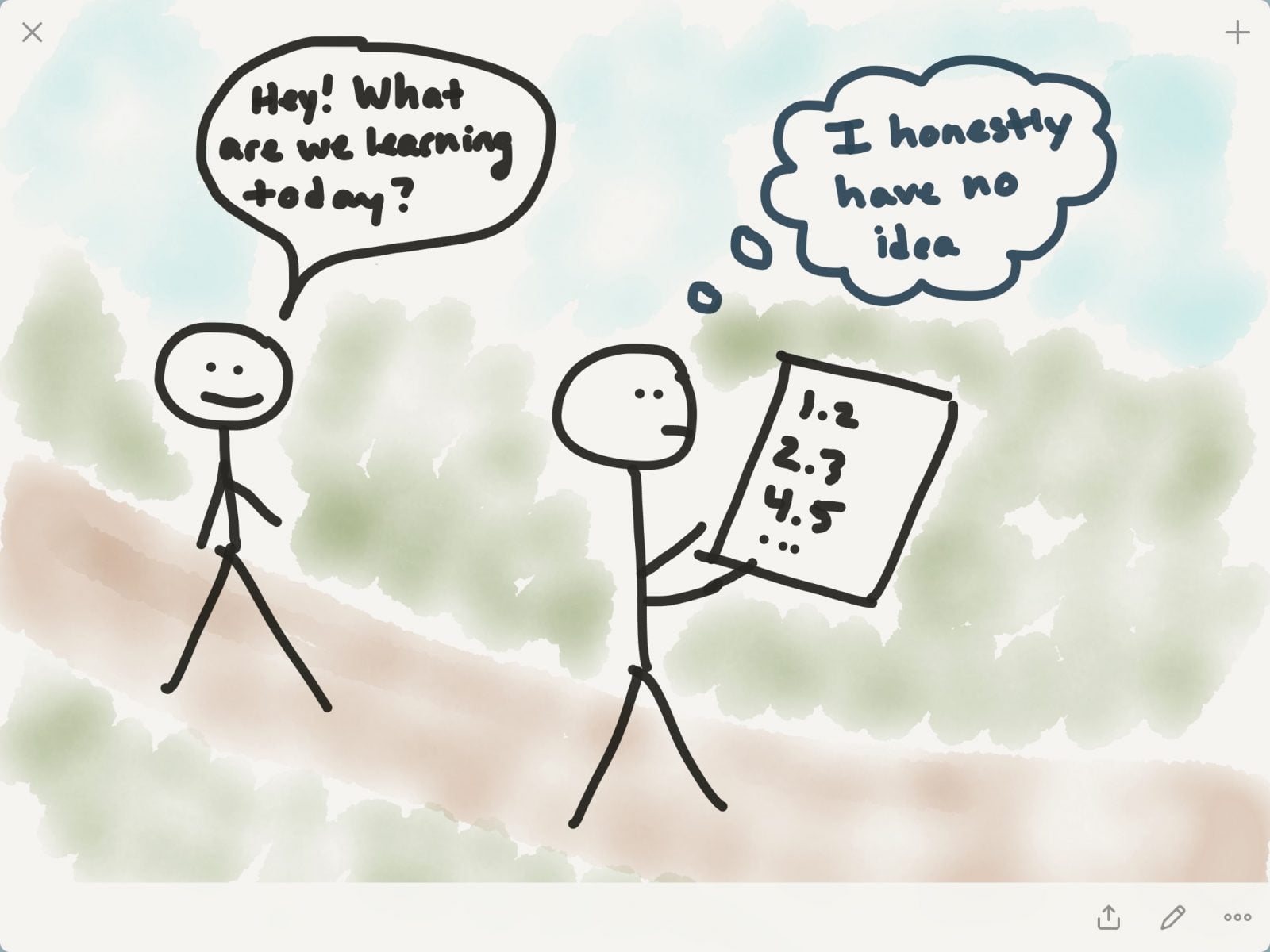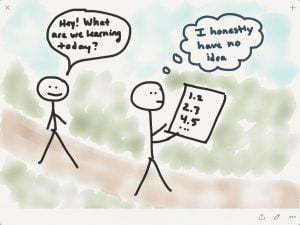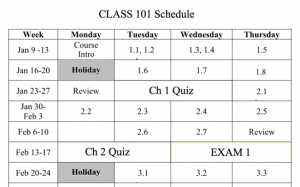Since many faculty are now approaching that time when syllabi get written and course shells get built, let’s focus on a very simple change that can increase student attention to learning the vocabulary and learning objectives/goals associated with the subject.
Take examine your syllabus, schedule, and course shell looking for places where you could have written the name of the course, the topics, or the learning objectives in words, but didn’t do it. When schedules and other course materials are passed out without any reference to the vocabulary of the subject, you are missing a great chance to put that vocabulary and learning objectives/goals front and center for your learners.
Consider this real course schedule I saw recently (altered a bit to protect the identity of the course and college).
This schedule contains no course name, no topics in words, and no learning goals. My course schedules used to look like this too (although they did at least have the name of the course at the top). But then I took a deep dive into how we learn vocabulary a couple years ago. Now I use every opportunity to engage students with the words that describe the topic and the learning goals.
This schedule was a golden opportunity for introducing (repeating) vocabulary and focusing on learning objective … and it was missed. Let’s look at a example of the same schedule with vocabulary and focus on learning objectives.
Now every day on the schedule has context to it, and the student is reminded of the language associated with the topic on every viewing of the schedule. If the student is making a judgement call about whether to skip class (face it, they do) or how long to procrastinate on doing their assigned homework, the context of what is in the schedule is very helpful to them. If they recognize no words in the topic, or recall that they have never figured it out in the past (dev math), then they have additional incentive to show up, leave more time to complete, etc.
The reality is that if we want students to actually learn the vocabulary of our subject area, they have to encounter the vocabulary as often as possible. They have to read the vocabulary like they will see it in context, and do that as much as possible. This repeated encounter helps them to begin to see the contrast between important differences. In the example above, there is a difference between solving equations and solving inequalities. The repeated exposure to those as two separate topics helps the student to begin to separate “equations” and “inequalities” as two distinct topics with rules associated with the overlap and contrast between them.
Working with the vocabulary and learning objectives is also helpful to faculty. Instructors need to see more than a section number as they plan out the learning for the semester. We’ve all encountered texts where one section is not equal to one hour of class. Writing out the learning topics / objectives gives the instructor a chance to reflect on where there needs to be supplementary learning activities and where the topic is actually too “lite” for a whole day of class. By planning for this natural fluctuation up front (assuming one has experience teaching the course on a previous occasion), it is more likely that the pacing of the course will match the real learning of the students.
Challenge: Take a fresh look at your syllabus, schedules and/or course shell. Find opportunities to place vocabulary and learning objectives/goals in more prominent locations.
Note: A weekly bite of learning design and a challenge goes out every week. If you’d like to have it delivered to your inbox, sign up at Weekly Teaching Challenge.







